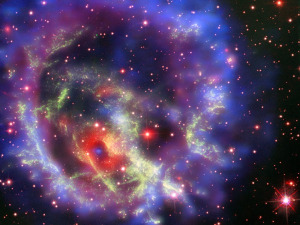
Do you know what ingredients make a star? At first, the star starts off as dust. Then hydrogen is burned into helium which also makes balloons float, in a process called nuclear fusion. That is how a star is born.
Once that happens, the star will keep on burning energy and may glow for billions of years. It does this for most of its life, a process that is called the main sequence.
When the hydrogen stops burning energy, the star expands to become a red giant. The red giant’s core will start to make iron. This process leads to its collapse. After this, the collapsed red giant will eventually become a white dwarf. However, if the star is bigger, it is possible for it to become a supernova. In a little bit of time, like three million years, the star may become either a black hole or a neutron star. If it becomes a black hole, it takes less than a second to collapse.
Did you know that some stars can be as big as our solar system? The sizes of stars are categorized by color. A red star is the smallest type of star, which tends to live longer because of its size. Yellow stars are more average in size. Blue stars are the biggest type and usually burn out the quickest. The nearest star to Earth is Proxima Centauri. It’s 4.2 light years away, which means that if you wanted to go, it would take 4.2 years traveling at the speed of light to get there. One day, we will visit Proxima Centauri.
[Source:
NASA
]

